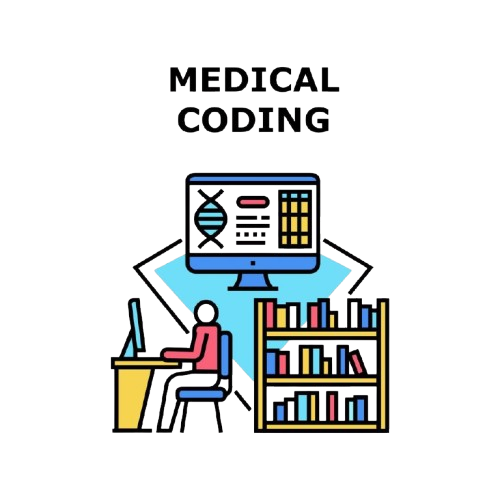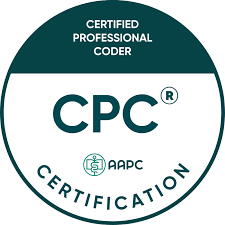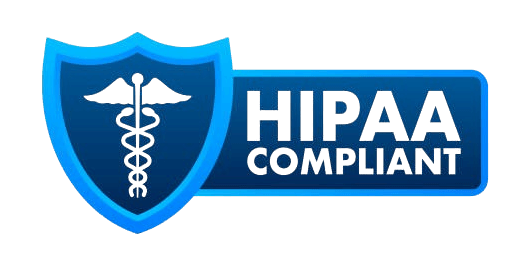What Is Medical Coding? Guide for Beginners in Healthcare
Learn what medical coding is, why it’s essential in healthcare, and how accurate coding impacts billing, compliance, and patient care.

INTRODUCTION
In the complex world of healthcare, medical coding is the backbone of accurate billing, streamlined reimbursement, and effective patient care. But what is medical coding in healthcare, and why is it so important?
This guide will walk you through the essentials of medical coding—its definition, function, and impact. We’ll cover the different types of medical coding, how it compares to medical billing, the role of medical coders, and the consequences of medical coding errors.
Whether you’re a healthcare provider aiming to improve your revenue cycle, a coding professional sharpening your expertise, or a patient curious about the behind-the-scenes processes, this article will give you a clear and practical understanding of medical coding in today’s healthcare system.
BLOG OUTLINE
- Why Accurate Medical Coding Matters in Healthcare
- Types of Medical Coding Systems
- How Medical Coding Impacts Healthcare Providers
- The Role and Responsibilities of a Medical Coder
- The Process of Medical Coding Explained
- Medical Coding Challenges And Solutions
- Why Outsourcing Medical Coding Services Makes Sense
- Medical Coding Certifications and Career Opportunities
- The Future of Medical Coding
Why Accurate Medical Coding Matters in Healthcare
Accurate medical coding is more than just a financial necessity — it’s a foundation for a well-functioning healthcare system. It acts as a bridge between healthcare providers, insurance companies, and patients, enabling the smooth exchange of information required for timely billing and reimbursement.
When codes are applied correctly, providers are reimbursed fairly and on time, which supports the sustainability of clinics, hospitals, and private practices. But the importance of coding accuracy doesn’t end with payments — it plays a critical role in maintaining the integrity of medical records, which are essential for continuity of care.
Precise medical coding also enhances patient care. By accurately converting diagnoses and procedures into standardized codes, healthcare facilities can gather better data — the kind used to track public health trends, evaluate outcomes, and improve treatment protocols. On the flip side, medical coding errors can lead to delayed treatments, incorrect patient records, and even serious safety risks.
In today’s regulatory environment, accuracy in coding has never been more important. Both government and private payers are increasing audits, and any inconsistencies in claims can result in penalties or legal consequences.

To remain compliant and protect revenue, healthcare organizations must prioritize ongoing training and regulatory compliance in medical coding. As healthcare continues to evolve, the demand for precise, accountable, and data-driven coding will only grow — making it a critical part of both clinical and operational success.
For Insurance Credentialing, Medical Billing Services and other services
Types of Medical Coding Systems
Understanding different coding systems is critical for anyone learning about medical coding basics. The most recognized coding systems include the International Classification of Diseases (ICD), Current Procedural Terminology (CPT), and the Healthcare Common Procedure Coding System (HCPCS). Each of these systems serves a distinct purpose and has its own set of guidelines and conventions for coding medical information, making it essential for coders to be familiar with all of them.
ICD
CODES
The International Classification of Diseases (ICD) is a globally recognized coding system used primarily to classify and code diagnoses, symptoms, and causes of death. It’s maintained by the World Health Organization (WHO) and plays a foundational role in both clinical care and health statistics. In the United States, the current version used for diagnosis coding is ICD-10-CM (Clinical Modification), while ICD-10-PCS (Procedure Coding System) is used for inpatient hospital procedures. Key functions of ICD codes include Documenting patient diagnoses in medical records, Supporting medical necessity in billing claims, Tracking public health trends and disease prevalence, Enabling epidemiological research and resource planning.
For example, if a patient is diagnosed with Type 2 diabetes, the appropriate ICD-10-CM code would be E11.9 (Type 2 diabetes mellitus without complications). This code tells the payer what condition is being treated and helps justify the services provided.
ICD codes are required for nearly all healthcare claims, and any error in coding a diagnosis can result in claim denials or compliance issues. The upcoming transition to ICD-11, although not yet implemented in the U.S., will further expand coding specificity and data interoperability. Staying updated with ICD guidelines is critical for coders to ensure accurate reporting, proper reimbursement, and patient safety.
The Current Procedural Terminology (CPT) coding system is developed and maintained by the American Medical Association (AMA) and is used to describe medical, surgical, and diagnostic procedures and services performed by healthcare providers. CPT codes are numeric five-digit codes (e.g., 99213 for a moderate-complexity office visit) and are used in both inpatient and outpatient settings. They serve several purposes, including Billing insurance for healthcare services, Tracking utilization of services for quality improvement and Communicating uniformly across providers, payers, and researchers.
CPT is divided into three main categories:
Category I: Regular procedures and services widely performed and approved by the FDA
Category II: Supplemental tracking codes for performance measurement (optional)
Category III: Temporary codes for emerging technologies, services, and procedures
These codes are updated annually to reflect advances in medical technology and clinical practice. For example: A routine chest X-ray might be coded as 71045 whereas A laparoscopic appendectomy might be coded as 44970.
CPT codes are essential in the revenue cycle, as they determine how much a provider gets reimbursed. Incorrect coding can lead to underpayment, delays, or even fraud investigations. To code accurately, medical coders must be well-versed in modifiers, bundling rules, and payer-specific policies. Mastery of CPT is key to ensuring financial stability and operational efficiency in any medical practice.
CPT
CODES
HCPCS codes
The Healthcare Common Procedure Coding System (HCPCS) is a standardized coding system used to identify healthcare services, supplies, and procedures not covered by CPT codes. HCPCS is divided into two levels where Level I are the CPT codes developed and maintained by the American Medical Association (AMA) to cover physician services and procedures like office visits, surgeries, and lab tests. Contrary to this, Level II are alphanumeric codes (e.g., A0428 for ambulance service, E0110 for crutches) to bill for non-physician services such as Ambulance transportation, Durable medical equipment (DME), Prosthetics and orthotics, Medications administered outside of a physician’s office or Supplies like surgical dressings and catheters.
Understanding and applying HCPCS Level II codes is crucial for providers like physical therapists, home health agencies, and durable medical equipment suppliers. These codes help ensure accurate claim submissions and timely reimbursements, especially in the Medicare billing process. For example, if a provider supplies a patient with a knee brace, a CPT code wouldn’t apply—but a HCPCS Level II code like L1810 (knee orthosis, elastic with joints) would be used.
How medical coding impacts healthcare providers
HEALTH CARE PROVIDERS
Medical coding has a profound impact on healthcare providers, influencing their revenue cycles, operational efficiency, and overall financial health. Accurate coding ensures that healthcare providers receive timely and appropriate reimbursement for the services they deliver. When codes are correctly assigned, it minimizes claim denials and reduces the time spent on appeals, allowing providers to focus more on patient care rather than administrative tasks. This efficiency is particularly crucial in a complex reimbursement landscape where every dollar counts towards sustaining a medical practice.
HEALTH DATA
Additionally, the quality of coding directly affects the accuracy of health data collected by providers. This data is instrumental for various purposes, including quality reporting, compliance with regulatory requirements, and participation in value-based care initiatives. Healthcare providers rely on this data to analyze their performance, identify areas for improvement, and implement strategies to enhance patient outcomes. Thus, the role of medical coding in shaping clinical practices and supporting evidence-based decision-making cannot be overstated.
Healthy Relationship with insurance companies
Moreover, medical coding influences healthcare providers’ relationships with insurance companies and government payers. Insurers depend on accurate coding to evaluate claims and determine coverage eligibility. Coding errors can lead to disputes, delayed payments, and even fraudulent claims investigations. For healthcare providers, this means that maintaining coding accuracy is not only about ensuring financial stability but also about fostering trust and transparency in their dealings with insurers. This relationship underscores the need for robust coding practices and continuous education to adapt to the ever-evolving healthcare landscape. Reliable coding also helps providers participate in value-based care initiatives like quality payment program, track clinical performance, and meet quality reporting standards. Errors in coding can strain relationships with payers and damage a provider’s reputation and finances.
The role and responsibilities of a medical coder
Medical coders are the linchpin between clinical care and administrative processes. They translate clinical documentation into standardized codes while ensuring compliance with current guidelines and payer rules. Their primary responsibility is to review medical records and assign the appropriate codes for diagnoses, procedures, and services rendered. This meticulous task requires a keen understanding of medical terminology, coding guidelines, and the various coding systems in use. Coders must ensure that every detail is accurately captured to support the billing process and uphold the integrity of patient records.
In addition to coding, medical coders are responsible for verifying the completeness and accuracy of the documentation provided by healthcare providers. They must be vigilant in identifying discrepancies or missing information that could lead to coding errors or claim denials. This aspect of their role requires strong analytical skills and attention to detail, as the coder's decisions can significantly impact the financial health of a medical practice. Coders often collaborate with physicians and other healthcare professionals to clarify any ambiguities in documentation, ensuring that the coding reflects the patient's clinical situation accurately.
Furthermore, medical coders are also involved in compliance and regulatory activities. They must stay abreast of changes in coding guidelines, payer policies, and legislation that may affect coding practices. This ongoing education is crucial, as improper coding can result in audits, penalties, or even legal issues for healthcare providers. By maintaining coding accuracy and compliance, medical coders play a crucial role in safeguarding their organizations against financial risks while contributing to the overall quality of patient care.
The process of medical coding explained
The process of medical coding begins with the collection of patient information and clinical documentation generated during a healthcare encounter. This documentation may include physician notes, lab results, imaging reports, and any other relevant information that provides insight into the patient's condition and the care provided. Medical coders meticulously review this documentation to extract the essential details necessary for accurate coding. This step is vital, as the quality of the documentation directly influences the coding outcome.
Once the relevant information is gathered, coders assign the appropriate codes based on established coding systems, such as ICD, CPT, and HCPCS. This process requires a comprehensive understanding of medical terminology, anatomy, and the specific coding guidelines associated with each code set. Coders must ensure that the codes accurately reflect the services provided and the patient's diagnoses. This step often involves cross-referencing codes and verifying their specificity to ensure compliance with payer requirements.
After that, the coding data is entered into the healthcare provider's billing system to generate claims for reimbursement. This is where the importance of accurate coding becomes evident, as any errors or discrepancies can lead to claim denials or payment delays. Therefore, many organizations implement quality assurance measures to review coded data before claims are submitted. This final review process helps identify and rectify any potential issues, minimizing the likelihood of financial disputes with insurers.
MEDICAL CODING CHALLENGES AND SOLUTIONS
| Challenges in Medical Coding | How to Overcome Them |
|---|---|
| One of the primary challenges is the ever-changing landscape of coding guidelines and regulations. As healthcare evolves, so too do the rules governing coding practices, which can lead to confusion and errors if coders are not kept up-to-date. | Continuous education and training are essential for coders to navigate these changes effectively and maintain coding accuracy. |
| Another significant challenge in medical coding is the complexity of medical records. As patient care becomes more sophisticated, the documentation associated with each encounter grows more detailed. This complexity can make it difficult for coders to extract relevant information and assign the correct codes. | To address this issue, healthcare organizations can implement standardized documentation practices and provide training for providers to ensure that the information captured is clear and comprehensive. This collaborative approach fosters better communication between clinical and coding staff, ultimately leading to more accurate coding. |
| Additionally, the increasing reliance on technology and electronic health records (EHR) presents its own set of challenges. While EHRs have streamlined many aspects of healthcare delivery, they can also introduce new coding complexities, such as system errors or inconsistencies in how information is recorded. | Healthcare organizations must invest in robust EHR systems and provide ongoing training for staff to ensure that coding processes are integrated seamlessly into the electronic documentation workflow. |
Why Outsourcing Medical Coding Services Makes Sense
Outsourcing medical coding services has become an increasingly popular option for healthcare organizations seeking to enhance their operational efficiency and reduce costs.
One of the primary benefits of outsourcing is access to specialized expertise. Outsourcing firms typically employ certified coders with extensive experience in various coding systems and a deep understanding of the ever-changing healthcare regulations. This expertise ensures that coding is completed accurately and efficiently, allowing healthcare providers to focus on delivering quality patient care.
Additionally, outsourcing medical coding can lead to significant cost savings for healthcare organizations. By partnering with an external coding firm, providers can reduce overhead costs associated with hiring, training, and retaining in-house coding staff. This arrangement allows organizations to scale their coding resources up or down based on fluctuating demand without the financial burden of maintaining a full-time staff.
Furthermore, outsourcing can streamline billing processes, leading to faster claim submissions and improved cash flow for healthcare providers.
Another advantage of outsourcing is the ability to leverage advanced technology and coding software. Many coding firms utilize cutting-edge tools and systems that enhance coding accuracy and efficiency. By outsourcing, healthcare organizations can benefit from these technological advancements without the need for significant investments in software or infrastructure. This access to technology, combined with the expertise of outsourced coders, can lead to improved coding outcomes and a more streamlined revenue cycle, ultimately contributing to the overall success of the healthcare organization.
Medical coding certifications and career opportunities
A career in medical coding offers growth, flexibility, and meaningful work. To enter the field, aspiring coders should earn certifications such as:
- The Certified Professional Coder (CPC) offered by the American Academy of Professional Coders (AAPC)
The Certified Coding Specialist (CCS) credential provided by the American Health Information Management Association (AHIMA).
These credentials boost employability and earning potential. With experience, coders can advance to roles like coding auditor, compliance officer, or health information manager. Given the rising demand for accurate billing and healthcare data analysis, medical coding careers are expected to grow steadily.
The demand for skilled medical coders continues to grow, driven by the increasing complexity of healthcare billing and the need for accurate documentation, making this a promising career path for individuals interested in the intersection of healthcare and data management.


The future of medical coding
Emerging technologies like AI and machine learning are set to transform medical coding. While automation can streamline routine tasks, human coders will still be needed for complex cases requiring clinical understanding.
As healthcare shifts towards data-driven decision-making and value-based care, the importance of accurate coding will only grow. Coders who stay informed and adapt to changes will be crucial assets to healthcare systems.
Understanding medical coding basics is vital for healthcare providers, coders, and patients alike. From reimbursement to regulatory compliance and patient care, medical coding impacts every corner of the healthcare industry.
By investing in proper training, staying updated on coding changes, and leveraging outsourcing or technology, healthcare organizations can enhance their efficiency and compliance.
As medical coding continues to evolve, it will remain a cornerstone of modern healthcare—linking clinical services with administrative excellence and improving care quality at every step.
Ready to Simplify Your Medical Coding and Billing?
✅ Reduce denials
✅ Improve cash flow
✅ Stay compliant with evolving guidelines
👉 Contact us today for a free consultation or learn more about our medical coding services or fill out this form to receive custom quote for medical billing and codingClick here to read more blogs on healthcare and medical billing


